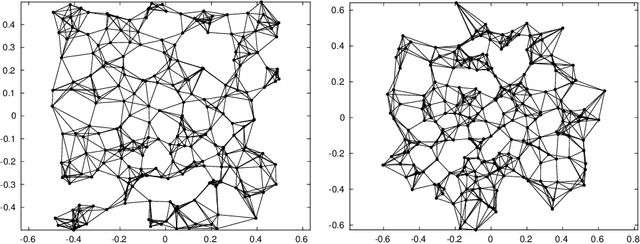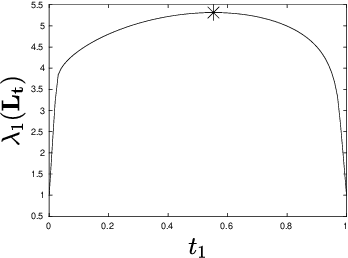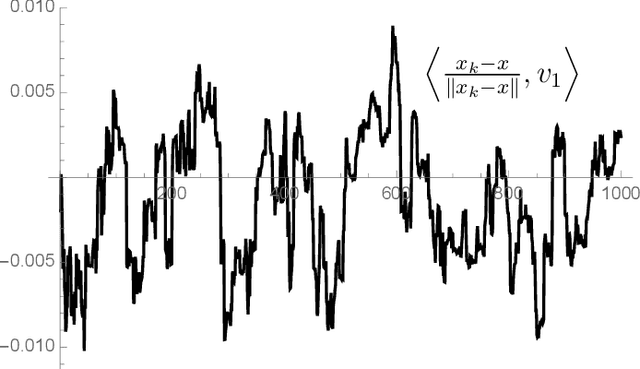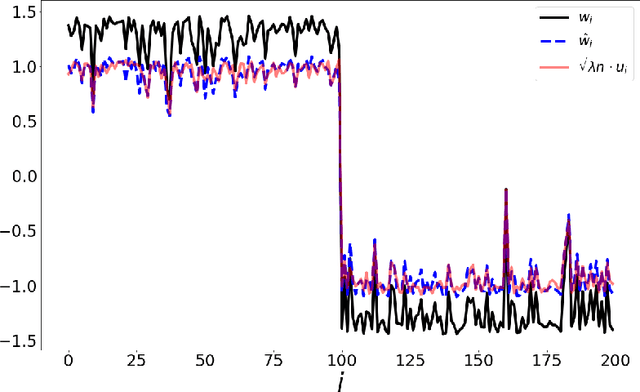Stefan Steinerberger
Michael Pokorny
Humanity's Last Exam
Jan 24, 2025Abstract:Benchmarks are important tools for tracking the rapid advancements in large language model (LLM) capabilities. However, benchmarks are not keeping pace in difficulty: LLMs now achieve over 90\% accuracy on popular benchmarks like MMLU, limiting informed measurement of state-of-the-art LLM capabilities. In response, we introduce Humanity's Last Exam (HLE), a multi-modal benchmark at the frontier of human knowledge, designed to be the final closed-ended academic benchmark of its kind with broad subject coverage. HLE consists of 3,000 questions across dozens of subjects, including mathematics, humanities, and the natural sciences. HLE is developed globally by subject-matter experts and consists of multiple-choice and short-answer questions suitable for automated grading. Each question has a known solution that is unambiguous and easily verifiable, but cannot be quickly answered via internet retrieval. State-of-the-art LLMs demonstrate low accuracy and calibration on HLE, highlighting a significant gap between current LLM capabilities and the expert human frontier on closed-ended academic questions. To inform research and policymaking upon a clear understanding of model capabilities, we publicly release HLE at https://lastexam.ai.
Randomly Pivoted Partial Cholesky: Random How?
Apr 17, 2024



Abstract:We consider the problem of finding good low rank approximations of symmetric, positive-definite $A \in \mathbb{R}^{n \times n}$. Chen-Epperly-Tropp-Webber showed, among many other things, that the randomly pivoted partial Cholesky algorithm that chooses the $i-$th row with probability proportional to the diagonal entry $A_{ii}$ leads to a universal contraction of the trace norm (the Schatten 1-norm) in expectation for each step. We show that if one chooses the $i-$th row with likelihood proportional to $A_{ii}^2$ one obtains the same result in the Frobenius norm (the Schatten 2-norm). Implications for the greedy pivoting rule and pivot selection strategies are discussed.
May the force be with you
Aug 13, 2022



Abstract:Modern methods in dimensionality reduction are dominated by nonlinear attraction-repulsion force-based methods (this includes t-SNE, UMAP, ForceAtlas2, LargeVis, and many more). The purpose of this paper is to demonstrate that all such methods, by design, come with an additional feature that is being automatically computed along the way, namely the vector field associated with these forces. We show how this vector field gives additional high-quality information and propose a general refinement strategy based on ideas from Morse theory. The efficiency of these ideas is illustrated specifically using t-SNE on synthetic and real-life data sets.
A common variable minimax theorem for graphs
Jul 30, 2021



Abstract:Let $\mathcal{G} = \{G_1 = (V, E_1), \dots, G_m = (V, E_m)\}$ be a collection of $m$ graphs defined on a common set of vertices $V$ but with different edge sets $E_1, \dots, E_m$. Informally, a function $f :V \rightarrow \mathbb{R}$ is smooth with respect to $G_k = (V,E_k)$ if $f(u) \sim f(v)$ whenever $(u, v) \in E_k$. We study the problem of understanding whether there exists a nonconstant function that is smooth with respect to all graphs in $\mathcal{G}$, simultaneously, and how to find it if it exists.
t-SNE, Forceful Colorings and Mean Field Limits
Feb 25, 2021



Abstract:t-SNE is one of the most commonly used force-based nonlinear dimensionality reduction methods. This paper has two contributions: the first is forceful colorings, an idea that is also applicable to other force-based methods (UMAP, ForceAtlas2,...). In every equilibrium, the attractive and repulsive forces acting on a particle cancel out: however, both the size and the direction of the attractive (or repulsive) forces acting on a particle are related to its properties: the force vector can serve as an additional feature. Secondly, we analyze the case of t-SNE acting on a single homogeneous cluster (modeled by affinities coming from the adjacency matrix of a random k-regular graph); we derive a mean-field model that leads to interesting questions in classical calculus of variations. The model predicts that, in the limit, the t-SNE embedding of a single perfectly homogeneous cluster is not a point but a thin annulus of diameter $\sim k^{-1/4} n^{-1/4}$. This is supported by numerical results. The mean field ansatz extends to other force-based dimensionality reduction methods.
Neural Collapse with Cross-Entropy Loss
Jan 18, 2021
Abstract:We consider the variational problem of cross-entropy loss with $n$ feature vectors on a unit hypersphere in $\mathbb{R}^d$. We prove that when $d \geq n - 1$, the global minimum is given by the simplex equiangular tight frame, which justifies the neural collapse behavior. We also prove that as $n \rightarrow \infty$ with fixed $d$, the minimizing points will distribute uniformly on the hypersphere and show a connection with the frame potential of Benedetto & Fickus.
On the Regularization Effect of Stochastic Gradient Descent applied to Least Squares
Sep 01, 2020


Abstract:We study the behavior of stochastic gradient descent applied to $\|Ax -b \|_2^2 \rightarrow \min$ for invertible $A \in \mathbb{R}^{n \times n}$. We show that there is an explicit constant $c_{A}$ depending (mildly) on $A$ such that $$ \mathbb{E} ~\left\| Ax_{k+1}-b\right\|^2_{2} \leq \left(1 + \frac{c_{A}}{\|A\|_F^2}\right) \left\|A x_k -b \right\|^2_{2} - \frac{2}{\|A\|_F^2} \left\|A^T A (x_k - x)\right\|^2_{2}.$$ This is a curious inequality: the last term has one more matrix applied to the residual $u_k - u$ than the remaining terms: if $x_k - x$ is mainly comprised of large singular vectors, stochastic gradient descent leads to a quick regularization. For symmetric matrices, this inequality has an extension to higher-order Sobolev spaces. This explains a (known) regularization phenomenon: an energy cascade from large singular values to small singular values smoothes.
Spectral Clustering Revisited: Information Hidden in the Fiedler Vector
Mar 22, 2020



Abstract:We are interested in the clustering problem on graphs: it is known that if there are two underlying clusters, then the signs of the eigenvector corresponding to the second largest eigenvalue of the adjacency matrix can reliably reconstruct the two clusters. We argue that the vertices for which the eigenvector has the largest and the smallest entries, respectively, are unusually strongly connected to their own cluster and more reliably classified than the rest. This can be regarded as a discrete version of the Hot Spots conjecture and should be useful in applications. We give a rigorous proof for the stochastic block model and several examples.
The Spectral Underpinning of word2vec
Feb 27, 2020



Abstract:word2vec due to Mikolov \textit{et al.} (2013) is a word embedding method that is widely used in natural language processing. Despite its great success and frequent use, theoretical justification is still lacking. The main contribution of our paper is to propose a rigorous analysis of the highly nonlinear functional of word2vec. Our results suggest that word2vec may be primarily driven by an underlying spectral method. This insight may open the door to obtaining provable guarantees for word2vec. We support these findings by numerical simulations. One fascinating open question is whether the nonlinear properties of word2vec that are not captured by the spectral method are beneficial and, if so, by what mechanism.
Heavy-tailed kernels reveal a finer cluster structure in t-SNE visualisations
Apr 04, 2019



Abstract:T-distributed stochastic neighbour embedding (t-SNE) is a widely used data visualisation technique. It differs from its predecessor SNE by the low-dimensional similarity kernel: the Gaussian kernel was replaced by the heavy-tailed Cauchy kernel, solving the "crowding problem" of SNE. Here, we develop an efficient implementation of t-SNE for a $t$-distribution kernel with an arbitrary degree of freedom $\nu$, with $\nu\to\infty$ corresponding to SNE and $\nu=1$ corresponding to the standard t-SNE. Using theoretical analysis and toy examples, we show that $\nu<1$ can further reduce the crowding problem and reveal finer cluster structure that is invisible in standard t-SNE. We further demonstrate the striking effect of heavier-tailed kernels on large real-life data sets such as MNIST, single-cell RNA-sequencing data, and the HathiTrust library. We use domain knowledge to confirm that the revealed clusters are meaningful. Overall, we argue that modifying the tail heaviness of the t-SNE kernel can yield additional insight into the cluster structure of the data.
 Add to Chrome
Add to Chrome Add to Firefox
Add to Firefox Add to Edge
Add to Edge